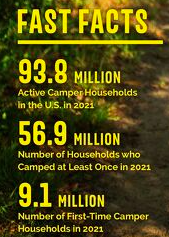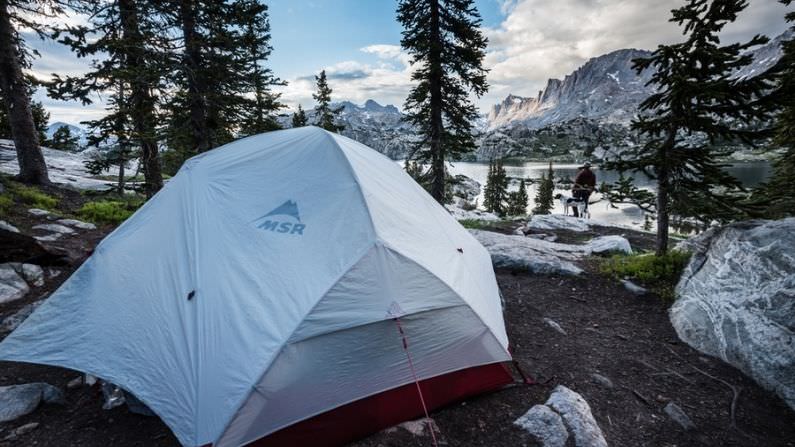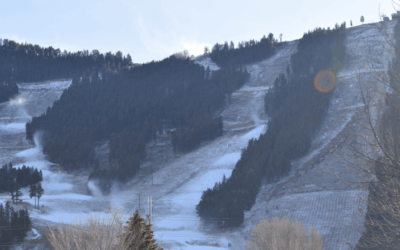More than nine million households went camping for the first time last year, according to a new report from Kampgrounds of America (KOA). That’s a record amount, and KOA Marketing Director Whitney Scott said, in many ways, camping is leading the way as the travel sector continues to recover from the pandemic.
“80% of all leisure travelers are identifying as campers these days,” Scott said. “So, regardless of demographic or age or background or interest, people are camping at a macro level. It’s not a who, it’s who’s not.”

Camping had a record year in 2021. (Screenshot courtesy of KOA)
Campground use is up across the country, as is RV use, glamping and backpacking. More people than ever are also working remotely from their camping trips, and more visitors to outdoor sites come from urban areas and represent more diverse communities. Scott said that means what people are coming to expect in terms of amenities when they go camping is also starting to change.
“At KOA for instance, we have Wi-Fi at every single campground because we know that it’s actually helping people disconnect, being able to connect,” Scott said. “They stay longer. They feel like they can stay longer and they can work remotely. Their kids can dial into school. So, it’s ways that we have to adapt and innovate for the future as well as at campsites.”
KOA is also trying to help close the gap in experience that’s becoming more prevalent, according to Scott. About a quarter of campers who picked up the pastime for the first time in 2021 are unlikely to do so in 2022, either because of gear issues, a lack of knowledge in their area or overcrowding. Scott said a lot of her work comes down to managing expectations for leisure travelers and creating bridge programs like ambassador initiatives.
“Traditionally, campers came into camping usually with somebody. So, someone taught them how to camp. And so there was a connection with a person and then there was a connection with the education of how to do it,” Scott said. “Those nine million households, no, they were just diving in all by themselves. And there is a responsibility for us to get that information in front of them to help them connect to the outdoors and to each other.”
Four in 10 campers in 2021 also had an estimated annual income of more than $100,000, and Scott said that level of affluence continues to increase. She’s hoping initiatives like gear-sharing programs can help reverse that trend so camping remains accessible for everyone, despite their income level.
“It’s not just saying, ‘Yeah, you can camp with us,’” Scott said. “We need to start building, working within programs that reach out to lower-income brackets, minority groups, you know, across the board, and say like, ‘What are the things that we can do to help these people experience the outdoors and help them step into it in a positive way?’”
Of course, the prevalence of more visitors isn’t always seen as a good thing by everyone. 44% of campers in KOA’s report said they got outside less because of overcrowding, and 45% said they were affected by the large number of newcomers. Scott said it’s likely that the friction will persist into coming years as massive changes unfold in her industry.






